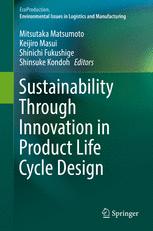

Most ebook files are in PDF format, so you can easily read them using various software such as Foxit Reader or directly on the Google Chrome browser.
Some ebook files are released by publishers in other formats such as .awz, .mobi, .epub, .fb2, etc. You may need to install specific software to read these formats on mobile/PC, such as Calibre.
Please read the tutorial at this link: https://ebookbell.com/faq
We offer FREE conversion to the popular formats you request; however, this may take some time. Therefore, right after payment, please email us, and we will try to provide the service as quickly as possible.
For some exceptional file formats or broken links (if any), please refrain from opening any disputes. Instead, email us first, and we will try to assist within a maximum of 6 hours.
EbookBell Team

4.0
26 reviewsThis book consists of chapters based on selected papers presented at the EcoDesign2015 symposium (9th International Symposium on Environmentally Conscious Design and Inverse Manufacturing). The symposium, taking place in Tokyo in December 2015, has been leading the research and practices of eco-design of products and product-related services since it was first held in 1999. The proceedings of EcoDesign2011 were also published by Springer.
Eco-design of products and product-related services (or product life cycle design) are indispensable to realize the circular economy and to increase resource efficiencies of our society. This book covers the state of the art of the research and the practices in eco-design, which are necessary in both developed and developing countries. The chapters of the book, all of which were peer-reviewed, have been contributed by authors from around the world, especially from East Asia, Europe, and Southeast Asia.
The features of the book include (1) coverage of the latest topics in the field, e.g., global eco-design management, data usage in eco-design, and social perspectives in eco-design; (2) an increased number of authors from Southeast Asian countries, with a greater emphasis on eco-design in emerging economies; (3) high-quality manuscripts, with the number of chapters less than half of that of the previous book.